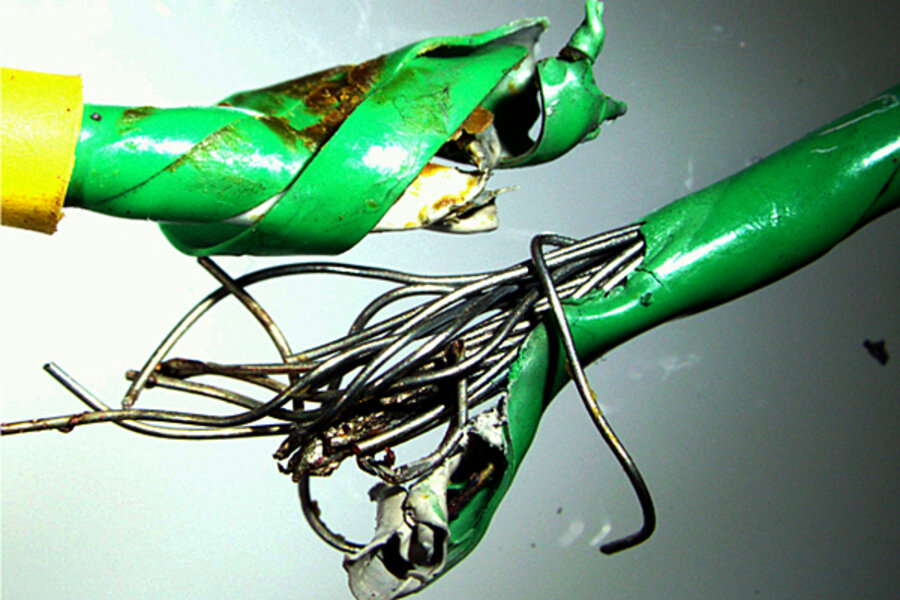Boeing 787 batteries: What's causing their 'thermal runaways?'
Loading...
[Editor's note: This story was updated at 5:00 pm ET on Feb. 5 to include material from an interview with Donald Sadoway of the Massachusetts Institute of Technology; At 12:30 pm ET on Feb. 6, the piece was edited again to more accurately state the 787's total number of operation hours.]
The source of Boeing 787 battery failures is proving elusive, weeks after two separate incidents involving overheated Boeing 787 batteries led to the grounding of the entire Dreamliner fleet.
Officials have confirmed that in both cases, the lithium-ion batteries showed signs of a "thermal runaway," a chain reaction in which rising cell temperatures accelerate chemical reactions in the battery. If heat is not allowed to escape, the situation can turn destructive.
Lithium-ion batteries are lightweight and charge quickly, making them an appealing choice for an airline company looking to reduce its energy usage. The energy-dense batteries are also prone to overheating.
Some have questioned the underlying architecture of the Boeing 787 battery systems, saying it lacks the ventilation and cooling systems necessary to keep the batteries stable.
"Large cells without enough space between them to isolate against the cell-to-cell thermal domino effect means it is simply a matter of time before there are more incidents of this nature," Elon Musk, CEO of electric car company Tesla Motors, wrote in an e-mail to Flight International last week.
Mr. Musk is also the CEO of the space transport company SpaceX, which competes with Boeing on lithium-ion battery technology.
Donald Sadoway, a professor of materials chemistry at Massachusetts Institute of Technology in Cambridge, Mass., said the thermal runaways are the result of either poor design, damage to battery components, lack of ventilation or some combination of all three.
"A thermal runaway is a situation when the battery is passing current and the temperature keeps rising," Mr. Sadoway said in a telephone interview. "That’s an indication that the buildup of the heat in the battery is in excess of the battery’s ability to shed that heat to it’s surrounding."
Whatever the exact cause, Sadoway said the failings shouldn't necessarily deter airline companies from relying more heavily on lithium-ion technology.
"It should be possible to make this work," he said, "but you’ve got to be circumspect about it."
Boeing declined to comment on the issue because of the ongoing investigation. In previous statements the company has said the 787 has 1.3 million cell hours of operation, with 16 cells per airplane. The operation hours include both on-ground and flight hours in commercial service.
The Federal Aviation Administration's testing and certification of new airline technology relies heavily on tests performed by the airline companies themselves. A 2011 report by the FAA's inspector general found that in one instance, an aircraft manufacturer made about 90 percent of the regulatory compliance determinations for a new aircraft design.
As the investigation continues, it probably will be weeks, if not months, before the grounded Dreamliner flies passengers again. In the meantime, the airline company is requesting permission from the FAA to perform test flights, the Seattle Times reports. Boeing hopes to test a possible fix that would improve the battery's ventilation of hot gas and liquid and its ability to contain internal overheating, sources told the Seattle Times.







